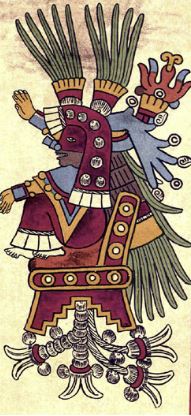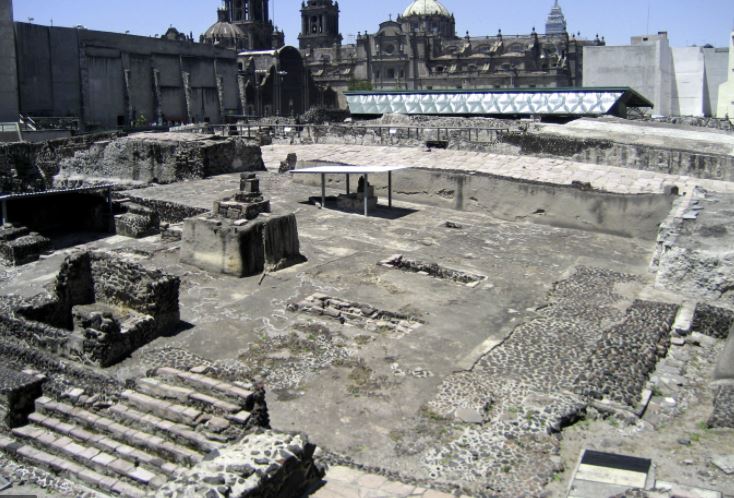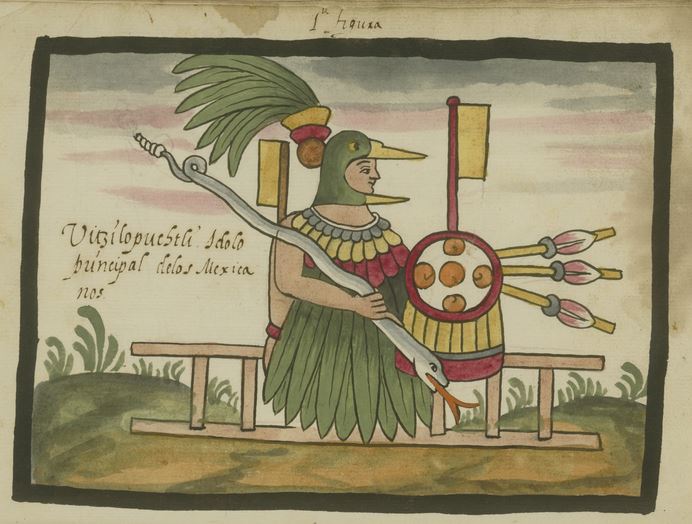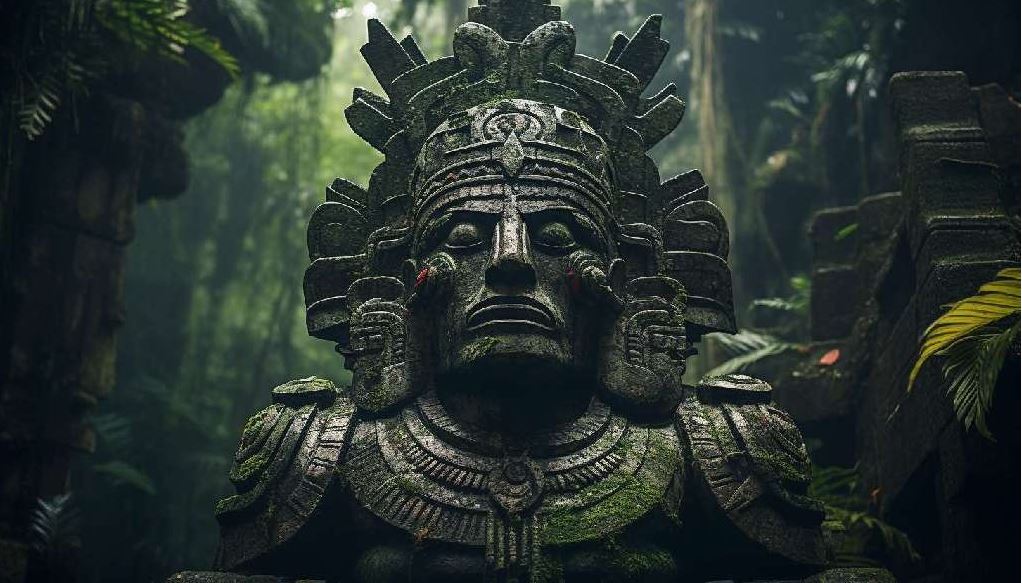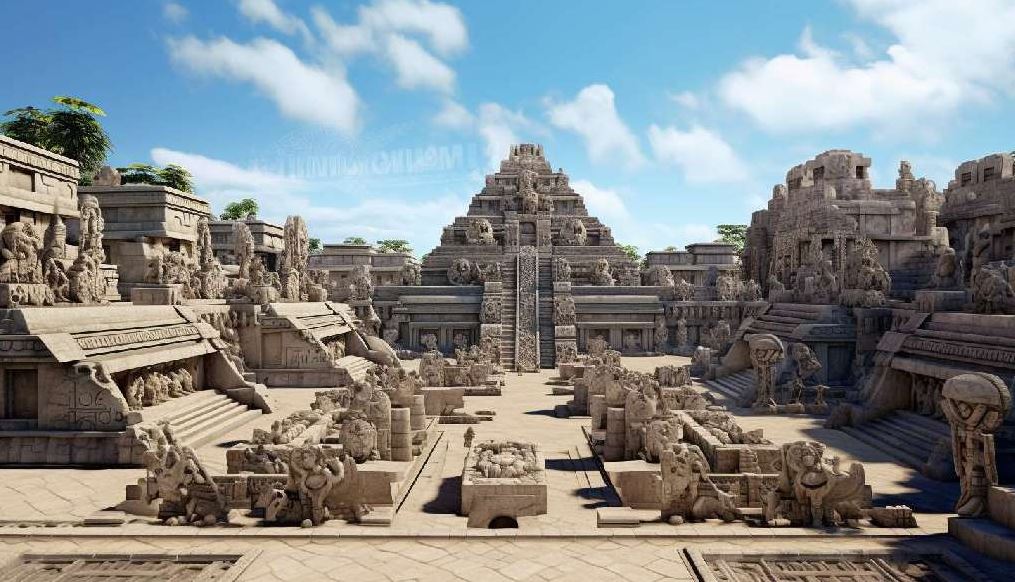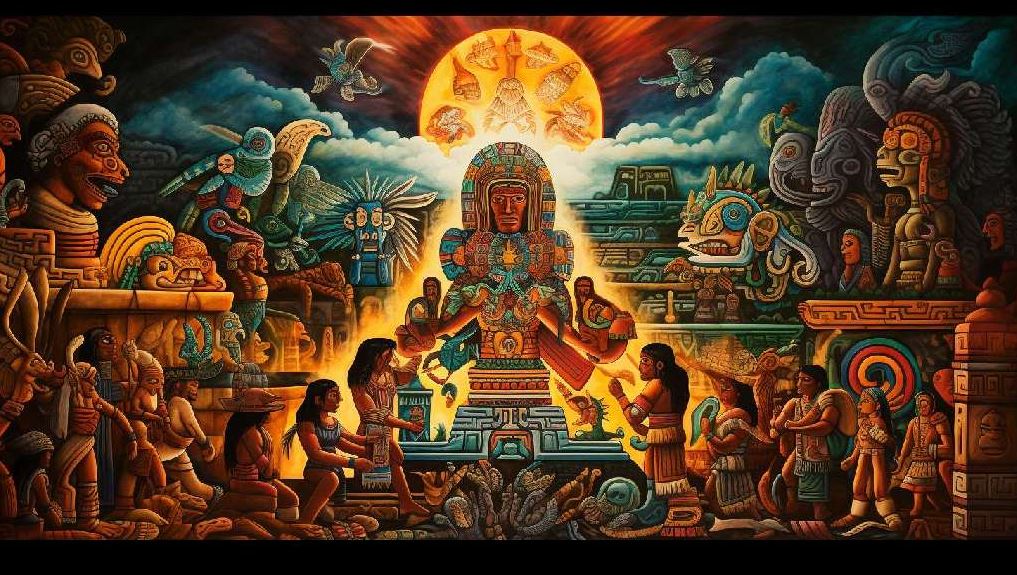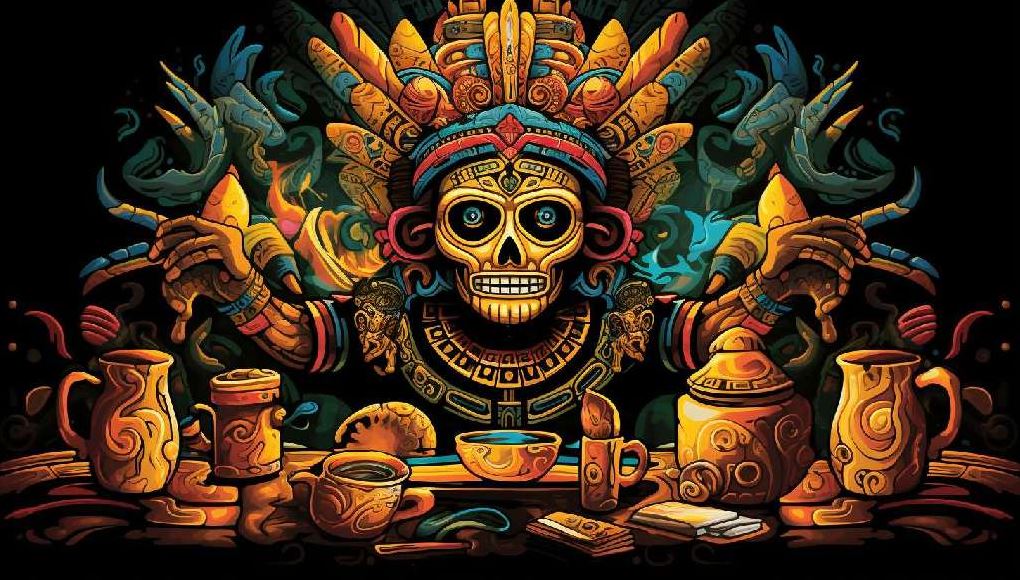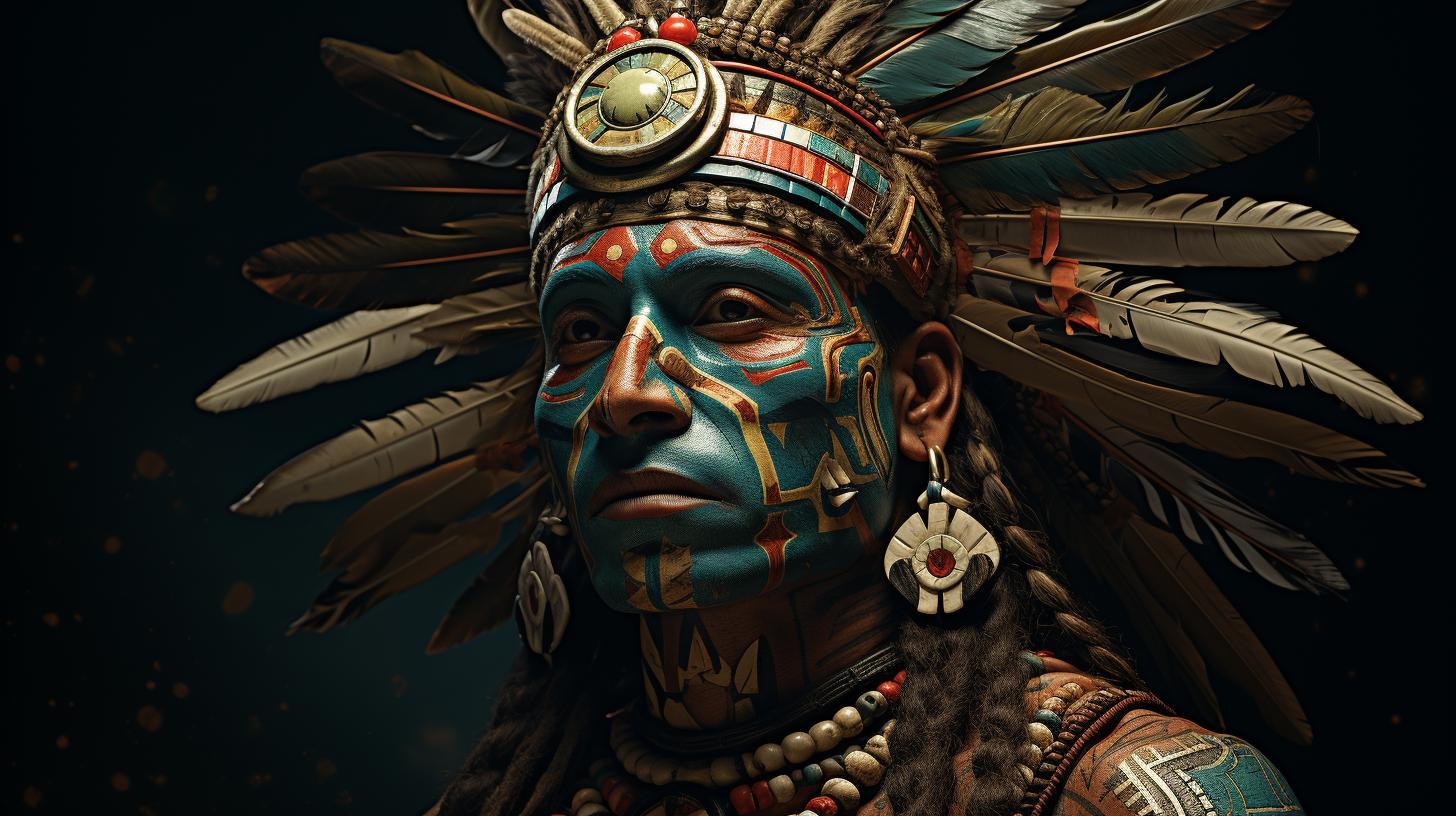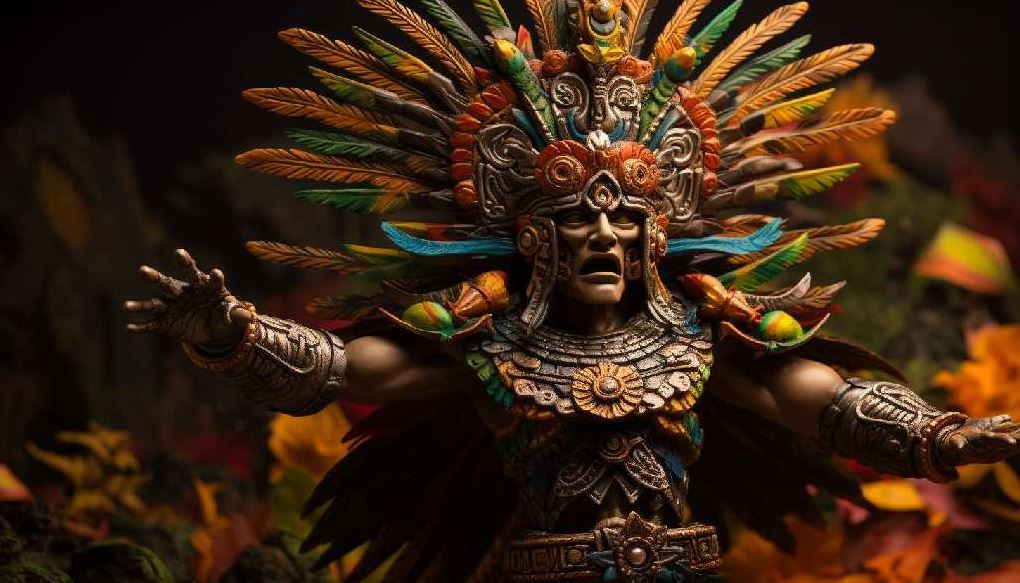Chantico, The Aztec Goddess of Fire and the Household
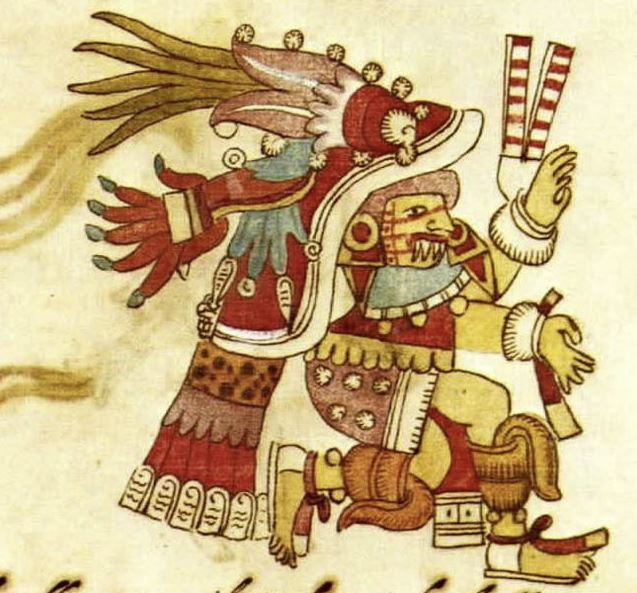
It was not unusual to see that in some religions, there were deities linked to both domestic and military matters. The Aztec goddess Chantico was an example of this link, just like the Roman goddess Vesta was in the Roman religion.
What was Chantico the goddess of?
In Aztec religion, Chantico was a domestic deity. She was mainly associated with the fires burning in the house hearth but was considered to be the protectress of the house and of the possessions inside it in general.
Because of a process of extension of her prerogatives, the Aztecs came to think of her as the protectress of their empire as a whole: it has been reported by the Spanish that Moctezuma, one of the last Aztec emperors, had an idol of the Aztec goddess Chantico with a removable leg, that he would have used as a tool to curse the land, obstructing the advance of Hernan Cortes.
For this reason, probably, Chantico had a tight link to the army and to military life in general, which was made evident in her iconography.
Chantico Aztec goddess
The appearance of Chantico goddess of fire
Her representations, in fact, usually displayed a crown made of spikes of a poisonous cactus, which was seen as a sign of aggressivity and peril, and at the top of her head was often present an ornament of feathers, which were a typical symbol of warriors.
In addition, among her accessories could be found the so-called alt-tlachinolli, or water-fire, a necklace which also was linked to warfare. Other elements which help to identify her in codexes and images are the obsidian sandals at her feet, the so-called itzcactli, and a golden pendant at her neck, which probably was a representation of the sun.
Being the goddess who presided to the domestic fire, Chantico was connected to this element, too, and was therefore linked to the other fire deities of the Aztec pantheon.
In particular, she was often associated with the god Xolotl: their connection was represented by the fact that they both were often depicted wearing the yacaxtuitl, a blue nose ornament.
Her cult was particularly strong among stonecutters. Likely for this reason, she was particularly worshipped in the town of Xochimilco, where stonecutting was widely practiced.
The meaning of Chantico Aztec goddess: Origin of the Name
It seems that the name “Chantico” might have signified “she who lives in the house”, surely alluding to her role as a domestic goddess.
Anyway, she was also referred to with other names. One of these was Quaxolotl, which would have meant “split in the upper part”, and would have therefore been a reference to Chantico’s link to the god of duality and twins, Xolotl.
Among stonecutters, she would have been also called Papaloxaual or Tlappapalo, meaning respectively “butterfly painting” and “the one of the red butterfly”. Anyway, there seem to be no other pieces of information clarifying this association of her with butterflies.
The fire was one of the main symbols of Chantico
Why is Chantico Aztec Goddess of Fire?
Unveiling the intricate tapestry of Aztec mythology, one can’t help but be captivated by the fiery persona of Chantico Aztec Goddess of Fire. Her name, translating to “She Who Dwells In The House,” subtly echoes her profound connection with hearth and home, symbolizing both protection and nurturance.
Chantico isn’t merely a divinity of destructive flames; she’s a celestial embodiment of transformation – a crucial theme in Aztec culture. Fire, to the Aztecs, was a transformative force, capable of changing the essence of objects and even souls. This transformative power, personified in Chantico, was revered, showcasing the dual nature of existence – creation and destruction, rebirth and death.
As the guardian of precious things, notably treasures and commodities like jade and gold, Chantico’s symbolism extends further, embodying wealth and abundance. Her intricate association with sustenance is marked by her alternate guise as “the red serpent of nourishment.” It is through Chantico that the Aztecs acknowledged the necessity of balance in the universe: the dangerous, yet beautiful, dance between volatility and bounty.
Understanding the role of Chantico, the Aztec goddess of fire is understanding the Aztec world’s profound depth.
The Goddess of Fire, a symbol of change, protection, and abundance, epitomizes the Aztec civilization’s profound recognition of life’s complex, transformative nature. Through Chantico, we experience the vibrant resonance of an ancient culture that embraced change as an integral part of existence.
History of Chantico goddess and Most Important Myths Related to Her
According to some scholars, the cult of the Aztec goddess Chantico would have originated there where she was most worshipped, in the town of Xochimilco.
Therefore, it would have spread to all the Aztec Empire, included of course the capital, Tenochtitlan, where Chantico goddess would have been venerated in the most important religious building, the Templo Mayor.
Chantico goddess of fire was the main character of an interesting myth describing food taboos among the Aztecs. Let’s see this story in greater detail.
The Aztec goddess Chantico and the Paprika
According to this story, the Aztec goddess of fire Chantico liked paprika very much. Some suggest that the reason behind this fact could be found in Chantico’s association with fire: paprika, in fact, remembers fire both in color and taste.
Anyway, in Aztec religion, food was a prerogative of the god Tonacatecuhtli, who used to occasionally declare fasts, i.e. days during which some particular foods were banned.
The paprika was very liked by the Aztec goddess Chantico
One day, a fast of this sort, forbidding anyone to eat paprika, was pronounced by Tonacatecuhtli; nonetheless, the Aztec goddess Chantico could not resist pouring this beloved spice on her meal, which consisted of roasted fish.
Angered, Tonacatecuhtli changed Chantico into a dog, as a form of punishment. According to some, this might be the reason why dogs love to rest by the hearth.
Powers of the Aztec goddess Chantico
In her role of protectress of possessions, of the house, and, more generally, of the Aztec homeland, the Aztec goddess Chantico was thought to be able to deny access to strangers and enemies.
Another representation of Chantico
Symbols of Chantico and Their Meanings
Besides the ones already mentioned, one of Chantico’s symbols was an eagle foot covered with the skin of a jaguar, located on a dish of blood.
Like many others of her attributes, this peculiar image, also, might have represented her link with war, since the dish of blood was a symbol of warrior sacrifice.
Additional Aztec goddess Chantico Facts
Chantico’s figure is linked to one of the most impressive and important archeological remains found in the lands once occupied by the Aztecs: the so-called Coyolxauhqui-Chantico monument.
As its name suggests, this object has been linked by scholars to two Aztec goddesses: one is the goddess of the moon, Coyolxauhqui, while the other is the domestic goddess Chantico.
It represents a giant head and has been discovered in the Templo Mayor, the most important and famous building that could be found in the ancient city of Tenochtitlan, the capital of the Aztec Empire. This head was called this way by Hermann Mayer, an important Mesoamerican scholar.
A picture of Templo Mayor
In fact, he argued, elements related to both deities could be found in it. The form and the subject of the statue, a giant head, surely reminded of Coyolxauhqui, and in particular of her role in the myth describing the birth of Huitzilopochtli: according to this story, in fact, Coyolxauhqui and her brothers would have tried to kill their mother while she was pregnant with Huitzilopochtli, but he would have come out of his mother’s womb and defeated them, beheading Coyolxauhqui.
At the same time, as noted by Eduard Seler, the character to whom the head belongs, represented in other objects, presents elements that can be easily associated with Chantico. In particular, it wears the itzcactli, the obsidian sandals, and a golden pendant which are often displayed in Chantico’s portraits. These facts have led some scholars to think that the two deities might be connected. Anyway, none of the surviving sources in their possession is able to confirm or clarify this point.













